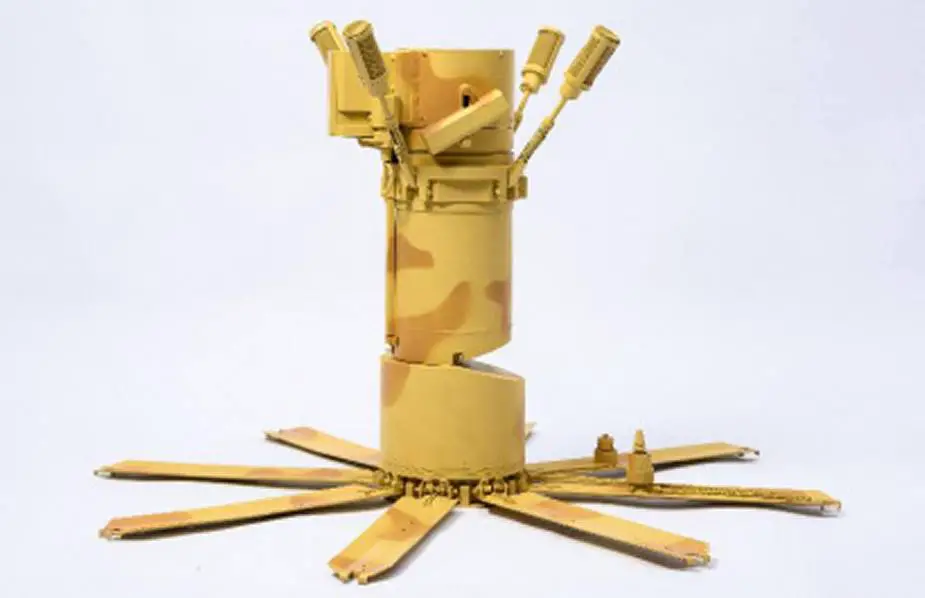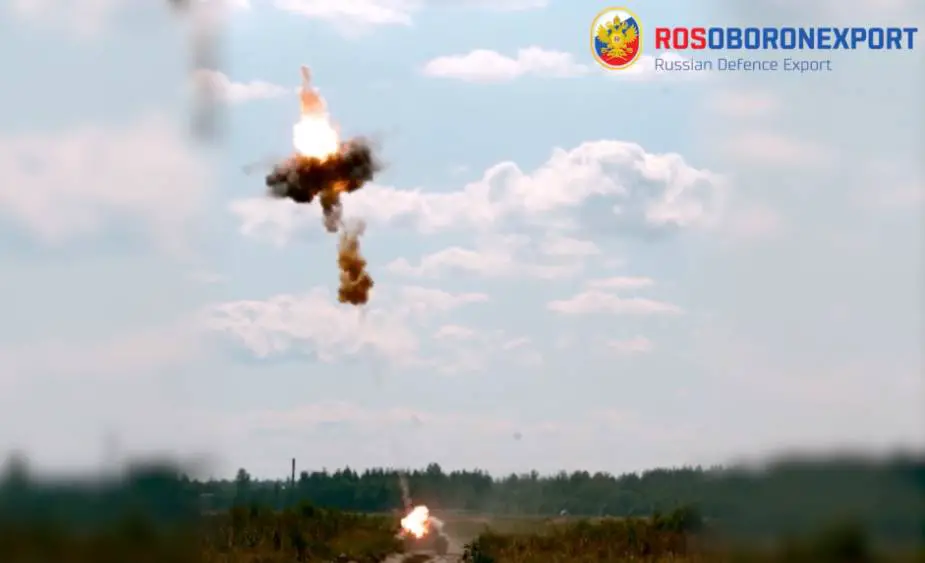Breaking news
Russian army employs PTKM-1R antitank jumping mines in Ukraine war.
Russian engineering troops are employing anti-tank PTKM-1R mines in Ukraine. However, it should be noted that the Ukrainian army is not waging any intensive offensive operations involving tanks at the moment. “Jumping mines” can effectively attack some under-protected parts of the hull of tanks, infantry fighting vehicles (IFV) and self-propelled howitzers. “This mine can be called ‘smart’ because it can identify a target before exploding or not. For example, it will not react to an ordinary car and will wait for heavy armored vehicles – a tank or an IFV – to pass by”, a Russian specialist said.
Follow Army Recognition on Google News at this link

PTKM-1R jumping anti-tank mine photographed in Ukraine in April 2022 (Picture source: social media)
Russian PTKM-1R mines can be referred to a new generation of anti-tank munitions. They are capable of attacking the most vulnerable parts of tanks, IFVs and self-propelled howitzers: the turret roof and and he hull.
The mine became officially known in 2018. Its batch production for Russian troops began in 2021. PTKM-1R was on view at Rosoboronexport’s pavilion at the Army-2022 military-technical forum.
This “smart munition” is designed for the selective destruction of armored vehicles and tanks. It is a landmine fitted out with seismic and acoustic transducers, a cumulative warhead and a transporter-launcher container. The PTKM-1R warhead is fired in the air in the direction of a detected armored vehicle and hits it in the upper part. The new ammunition aims exactly at the least protected part of a tank or a self-propelled howitzer: its roof and engine deck.
The PTKM-1R is capable of selecting what armored vehicle to hit, it chooses only the equipment that meets the specified parameters in terms of noise and ground vibration.
It is installed manually, at a distance of 5 to 50 m from the probable route of the target making it quite difficult to detect.
The PTKM-1R consists of:
►a transporter-launcher;
►a combat element.
The transporter-launcher is equipped with acoustic and seismic sensors, the combat element is equipped with infrared and radar sensors.
The mine can engage targets at between 5 and 50m but can detect a target out to 100m. Targets are initially identified by the mine by comparing the detected signature with acoustic and seismic signatures in its internal database. Once a target is detected the mine calculates a flight path and the launch unit tilts 30-degrees toward the target to create a parabolic ballistic trajectory over the target. While the mine can detect targets in a 360-degree arc the mine itself has a limited arc, limited by the need to tilt before firing, the mine has an arrow with ‘towards target’ for orientating the mine in the direction of expected engagement but in an Army 2021 presentation, Rosoboronexport suggest that the mine can turn itself to face its target, and track it if needed.
The submunition is launched into the air at a speed of 30m/s to a height of approximately 30 metres. It then uses infrared sensors and radar to pinpoint its target before detonating its shaped charge to create an explosively formed penetrator. Rosoboronexport claims the mine can penetrate ‘at least 70mm’ of armor.
The PTKM-1R can be considered an off-route mine like the German DM-22 and Estonian PK14s which are known to be in use with Ukrainian forces but its ability to strike from above sets it apart. The nearest similar system is the short-lived US M93 Hornet developed by Textron in the 1980s.

PTKM-1R jumping anti-tank mine (Picture source: Rosoboronexport)

PTKM-1R jumping anti-tank mine (Picture source: Rosoboronexport)

PTKM-1R submunition detonating and projecting its EPR down on a target during a 2021 demonstration (Picture source: Rosoboronexport)





























